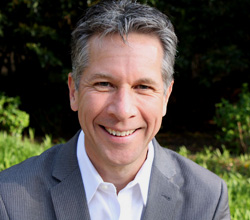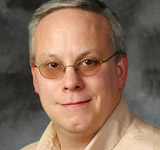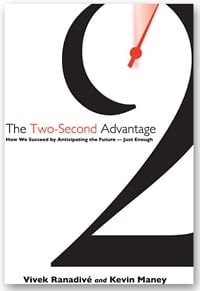By: Chuck Frey
In this interview with Kevin Maney, co-author of The Two-Second Advantage, I dig deeper into what the rise of predictive computing means to innovators.
I’m very impressed by The Two-Second Advantage: How We Succeed by Anticipating the Future – Just Enough, the new book by Vivek Ranadive and Kevin Maney. It explains in a very compelling way how a new evolution of technology, inspired by the way the best human brains work – will develop predictive capabilities that will transform our future. So when Paul Williams from the Idea Sandbox blog announced that he was looking for bloggers to participate in a virtual book tour for this fascinating book, I jumped at the chance.
For my contribution to this project, I interviewed co-author Kevin Maney by e-mail about his inspiration for the book, what the near future will bring in terms of predictive computing and what all of this means to innovators. As expected, his answers to my questions were very insightful:
Chuck Frey: What developments led you and Vivek Ranadive to write The Two-Second Advantage?
 Kevin Maney: It was me following brain research, particularly about the brain’s predictiveness, and Vivek seeing developments in the way computers and data were going to have to evolve. We realized the two actually fit together.
Kevin Maney: It was me following brain research, particularly about the brain’s predictiveness, and Vivek seeing developments in the way computers and data were going to have to evolve. We realized the two actually fit together.
Frey: What is your vantage point on these trends?
Maney: We’re all hearing about Big Data. But this rush of data is overwhelming our ability to make computers powerful enough to deal with it. There has to be a new model for computing and data. We think it’s a model that borrows ideas from how the brain works. The brain doesn’t rely on going through all the data that comes in through your senses. It just picks out what’s important, constantly makes short-term predictions based on that data, and learns from whether those predictions are true or not — which constantly refines the brain’s predictions.
Frey: It sounds like Vivek, being the CEO of Tibco, has a front-row seat to these developments. Can you please explain to our readers what TIBCO does in this space?
Maney: Tibco makes software that pulls in data from lots of sources, sorts it out, analyzes it, and delivers the right bit of data to the right place at the right time. If you evolve what Tibco does now, the technology gets more and more brain-like and predictive.
Frey: Do believe that anyone can cultivate the kind of expertise and ability to predict what’s going to happen next, as Wayne Gretzky did in hockey?
Maney: Yes, the research suggests that everyone can improve their brains and it seems that anyone who works long and purposefully enough can become talented at something – and talent is a function of being able to predict what’s about to happen a little better and faster than most of the population.
Frey: You spend a lot of time summarizing what’s going on in terms of how people develop mental models and exceptional expertise, and then transition over to emerging computer technology that will be capable of similar feats. What opportunities does that open up for organizations?
Maney: We believe that organizations have to become predictive, so they can react to events in real time the way a talented sports star reacts to what’s happening that second. If a company can see a pattern in a customer and know that the customer is about to defect, it can do something to keep that customer at just the right moment.
Frey: You share some compelling stories about early efforts to create predictive software that can give its users just enough insights, just in time. What do these efforts have in common?
Maney: They’re all using today’s technology – things like predictive analytics and real-time computing – to start to create predictive organizations. Sam’s Club, Caesars Entertainment, the East Orange, NJ, police department – they’re all moving in that direction.
Frey: How is this type of predictive technology different than data mining?
Maney: It’s night and day. Data mining looks at data from the past to try to make longer-term projections. We’re saying: learn from the data and then throw most of it away, and make constant, short-term, highly-accurate predictions.
Frey: What is “forward chaining,” and why is it important to creating predictive software?
Maney: That’s the way AI (artificial intelligence) “learns” today – by adjusting results based on feedback. It’s an important step toward creating brain-like software, but it’s only a step.
Frey: What can individual innovators and leaders do to cultivate the kind of “chunked expertise” you talk about in the book, so they can make more accurate predictions and decisions faster – with or without advanced AI software?
Maney: We write about venture capitalist Ben Horowitz and his view on what makes a good start-up CEO. The best ones soak up data about the company, but use it to build a great mental model of the business – essentially, using the data to create a great gut instinct. And then, the CEO needs to use that instinct instead of constantly asking for data before making a decision. If you’re the kind of person for whom there’s no such thing as enough data, you’re not – in Horowitz’s view – material for a great CEO.
Frey: You point out in the book that it’s one thing for a talented individual to cultivate this type of performance. But it’s a whole different challenge to transform an organization’s culture to enable it to react as quickly and accurately. How can organizations transform their cultures to react to events more like a talented human, and less like a lumbering bureaucracy?
Maney: Adopting two-second advantage technology only works if the culture changes to adopt it. The East Orange police, for instance, had to stop thinking of criminals as people to be caught, and start thinking of them as people to be influenced so they wouldn’t even think of committing a crime in town. That meant changing attitudes, the way performance was rewarded, and so on. But once the force bought in, they realized it worked and the crime rate plunged.
Frey: How far do you think we are away from the Predictive Organization?
Maney: We write about a number of organizations that have become predictive in pockets. A lot has to be developed – especially in technology – before we get a company that is predictive like a Gretzky. Probably a decade out, at least. But it’s got to happen.
Other stops on this week’s virtual book tour
Be sure to check out my colleaugues’ coverage of The Two-Second Advantage at these locations:
- Monday: Denise Lee Yohn
- Tuesday: Renee Hopkins
- Wednesday: Melissa Laughon
- Thursday: Chuck Frey (that’s me and you’re already here!)
- Friday: Paul Williams
Each other brings a different perspective on The Two-Second Advantage. Together, our five blog posts should give you a very well-rounded idea of why this is a must-read book.
About the author
Chuck Frey Senior Editor, founded InnovationTools.com and served as its publisher from its launch in 2002 until the partnership with Innovation Management in 2012. He is the publisher of The Mind Mapping Software Blog, the definitive souce for news, trends, tips and best practices for visual mapping tools. A journalist by trade, Chuck has over 14 years of experience in online marketing, and over 10 years experience in business-to-business public relations. His interests include creative problem solving, visual thinking, photography, business strategy and technology. His unique combination of experience and influences enables him to envision new possibilities and opportunities.
Senior Editor, founded InnovationTools.com and served as its publisher from its launch in 2002 until the partnership with Innovation Management in 2012. He is the publisher of The Mind Mapping Software Blog, the definitive souce for news, trends, tips and best practices for visual mapping tools. A journalist by trade, Chuck has over 14 years of experience in online marketing, and over 10 years experience in business-to-business public relations. His interests include creative problem solving, visual thinking, photography, business strategy and technology. His unique combination of experience and influences enables him to envision new possibilities and opportunities.

